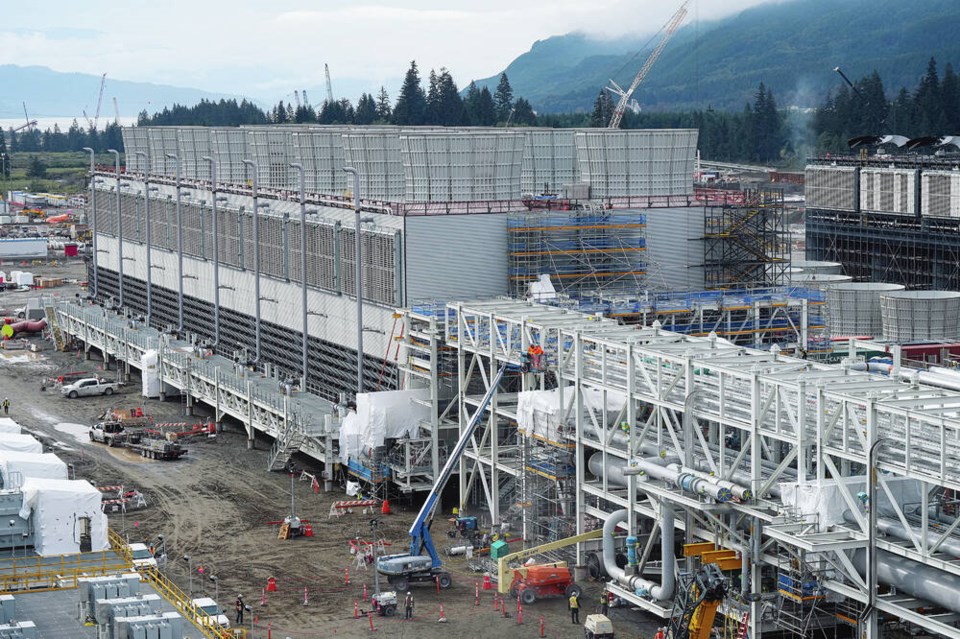Ten years ago, the B.C. government of the time ratified a deal with Malaysian petroleum company Petronas, guaranteeing the company low taxes and royalties, as well as static regulations for 25 years, in exchange for investments in developing and exporting the province’s liquified natural gas potential.
Then-premier Christy Clark had won the previous election in part on the promise to foster an LNG industry that would create tens of thousands of jobs and wipe out B.C.’s debt.
The subsequent BC NDP government expanded those subsidies to the province’s LNG industry, citing “economic opportunity and job creation with forward-looking environmental action that meets the Province’s climate action goals.”
Of course, it turned out that developing LNG in B.C. has been a more complicated and drawn-out process than first presented. Investors have pulled out or changed, and protests have highlighted issues.
But all through it, government, industry and natural gas producers and providers have touted LNG as a climate-friendly alternative to oil and coal and key to B.C.’s transition to a low-carbon economy.
Others challenge the claims. In 2022, a group of Canadian health-care professionals filed a complaint with the Competition Bureau of Canada, urging the agency to investigate advertising to that effect by the Canadian Gas Association, an industry lobby group for natural-gas-delivery corporations.
The complaint focuses on CGA advertising that represents gas as environmentally friendly, “clean,” affordable, and part of a sustainable energy future — representations the complainants say are false and misleading.
The Competition Bureau began investigating the claims in late 2022. The investigation is ongoing.
Closer to home, environmental group Stand.Earth and two B.C. residents filed a lawsuit against FortisBC, the province’s largest natural gas utility, in early 2024 for what they say are misleading environmental claims, or greenwashing, about natural gas.
FortisBC disagrees with the allegations. The case has yet to be heard in court.
However, as more data and analyses about LNG’s emissions potential becomes available, it becomes clearer that developing LNG and meeting climate goals and targets are contradictory objectives.
According to one of the latest assessments, published last month in the journal Energy Science & Engineering, LNG has a greenhouse-gas footprint that is 33 per cent worse than coal when processing and shipping are considered.
“LNG is made from shale gas, and to make it, you must supercool it to liquid form and then transport it to market in large tankers. That takes energy,” says study author Robert Howarth, a Cornell University professor of ecology and environmental biology.
Although less greenhouse gas is released into the atmosphere when LNG is burned to heat a home or fry up some bacon, heaps more are emitted upstream, Howarth says. Overall, the methane and CO2 released during LNG extraction, processing, transportation and storage account for about half of LNG’s total greenhouse-gas footprint.
The process whereby the extracted natural gas is cooled to -127°C and condensed into a liquid makes LNG easier to transport on tanker ships.
The liquefication process generates significant methane emissions. In addition, although the vessels with two- or four-stroke engines that ship LNG have lower CO2 emissions than steam-powered ships, as those stroke-engine vessels burn LNG during storage and transportation, methane slips through as emitted exhaust gas, putting more into the atmosphere.
Howarth found that methane emissions from tankers range from 3.9 to 8.1 per cent, depending on the ship.
Methane is more than 80 times more harmful to the atmosphere than CO2, meaning small amounts of methane have an outsized climate impact.
Over 20 years, Howarth’s study revealed that, all told, LNG’s carbon footprint is one-third larger than coal when analyzed to account for the atmospheric impact of different greenhouse gases.
Even on the more-forgiving 100-year time scale, the findings indicate LNG’s carbon footprint equals or exceeds coal.
“Liquefied natural gas will always have a bigger climate footprint than natural gas, no matter what the assumptions of being a bridge fuel are,” Howarth says. “It still ends up substantially worse than coal.”
The results provide a glimpse of how difficult it will be for B.C. to meet its own emissions targets, let alone international targets, on the current path to develop the province’s LNG potential — something to ponder while communities across B.C. endure costly flooding from extreme winter weather, the effects of multi-year drought and catastrophic summer wildfires.




